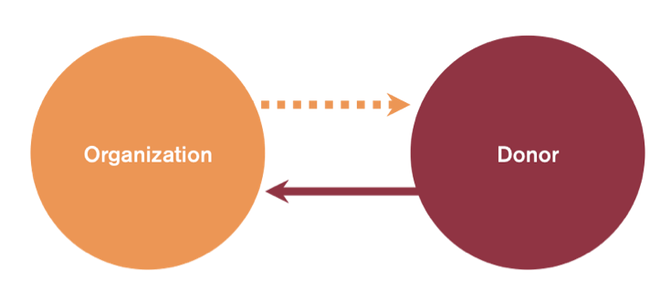A Introduction To Peer-to-Peer Fundraising
For nearly 30 years, I've worked in and around the peer-to-peer fundraising space.
Of course, three decades ago, we didn't call what I was doing "peer-to-peer." That was before the internet, file-sharing apps, mobile phones, and social networking transformed our landscape and our vocabulary. In the mid-1990s, we called peer-to-peer fundraising "event fundraising," "special events," or maybe even "walkathons."
But the core essence was the same – harnessing the passion of individuals to engage their networks to spread the mission, share the message, and raise money.
Since those early days, I've watched the sector grow as the world has transformed. And in the process, the Plenty team has been fortunate enough to create, operate, or consult on hundreds of peer-to-peer fundraising campaigns, including the majority of the biggest peer-to-peer campaigns in the country and seven of the top ten campaigns in the Peer-to-Peer Top 30.
Recently, I've been pleased by the number of new professionals and executives leading their nonprofits into peer-to-peer fundraising for the first time. It felt timely to recap why we've been so committed to helping grow this field. And to do that, it helps to explain how peer-to-peer works and why it is different than traditional fundraising.
The Traditional Fundraising Paradigm

In traditional fundraising, your organization has a direct relationship with your donors. You sincerely ask for contributions by passionately and authentically explaining the better world you are working to create, and your donors respond by giving you money to power the mission. This way of fundraising can be personal, poignant, and incredibly effective, particularly when leveraged by the vast number of digital tools we now have at our disposal.
But, because of its one-to-one dynamic, your organization's fundraising potential is contingent upon the number of people your organization knows. As a result, there's a limit to how quickly you can expand your mission.
The Potential of Peer-to-Peer Fundraising
Peer-to-peer (P2P) fundraising fundamentally changes this dynamic. In peer-to-peer, your organization essentially deputizes your supporters to ask on your behalf. You magnify your reach by tapping into the networks of others.

You can probably imagine the potential when you look at this second graphic. Just like LinkedIn can introduce your resume to hundreds of possible employers or Instagram can get your photograph on the feed of hundreds of admirers, peer-to-peer fundraising can dramatically change the course of your organization by introducing your mission to thousands of new donors.
When it works, P2P can create a massive new pool of potential donors because your list of supporters is no longer limited to the people your organization knows directly. Instead, you now have access to your constituents and the families, friends, and coworkers of your constituents, too. In this model, your audience is expanded exponentially. In peer-to-peer fundraising, it's not just about whom you know, but also about whom your supporters know.
And further, peer-to-peer fundraising empowers your supporters to spread their story and their passion in service of yours. In today's world, where everyone has a platform and self-expression is highly-valued, harnessing this level of personal ownership can be truly amazing.
The Risks of Peer-to-Peer Fundraising
Notice, however, that I wrote, "when it works." That's because peer-to-peer fundraising brings with it some inherent risks, too. For P2P to be effective, you have to trust your supporters – the vast majority of whom won't know your nonprofit nearly as well as you do – to convey your precious mission messages. That means you have to invest time in making your impact clear, easy to understand, and even easier to share.
Sure, there is an annual ranking of the most successful P2P programs in the country. But there's no listing of all the peer-to-peer fundraising campaigns that fail. The failures fade away as executives get demoted, concepts get shelved, and consultants get fired (ahem).
In almost every case of failure that I've seen – and yes, I've worked on my fair share of them – it wasn't because the nonprofit team was ineffective or the supporters weren't willing. Campaigns fail because the message and the concept aren't concise and compelling enough for the supporters to share with their friends.
So let's look briefly at how to do it right.
How Peer-to-Peer Fundraising Works
1. The organization asks its supporters to participate in a peer-to-peer fundraising event or campaign.
Have you ever attended a gala or participated in a 5K? That’s peer-to-peer fundraising. What about a dance marathon like the one at Penn State, a mustache-growing challenge along the lines of Movember, or a relay like the one hosted by the American Cancer Society? Again, these are all examples of the peer-to-peer model at work. P2P fundraising events come in a variety of forms, sizes, and styles, but one thing is constant: they all start by asking supporters to participate.
2. The organization asks each registered participant to fundraise.
Peer-to-peer fundraising campaigns have a more complex income model than a traditional fundraising program. In addition to any fee to sign up, P2P campaigns include a required fundraising minimum, or at least the recommendation to fundraise.
Note that, as opposed to traditional fundraising campaigns, this means peer-to-peer fundraising campaigns contain two asks: the ask to participate and then the ask to fundraise.
Why this second ask? Why is it important to have a fundraising requirement and not just a registration fee? To put it simply, the fundraising component is what mobilizes the participants to engage their networks. The fundraising requirement not only generates more revenue for your organization – it is what starts the networking dynamics to begin with.
While there are social networking tools that can help your constituents spread your message, true peer-to-peer fundraising is about more than spreading a message – it is about using a network to create more impact for your mission. Attending your event isn’t enough – if we’re going to create a better world, your participants have to fundraise.
3. The fundraiser then asks people they know to donate to the organization.
Remember that in peer-to-peer fundraising, we're not just making an ask to our constituents. Rather, we're also enabling them to make asks of their own. This is the critical interaction in P2P fundraising – a constituent reaching out to their network on your behalf, ultimately allowing you to connect with a much larger audience than you do in traditional fundraising.
One of the many benefits of this model is that it allows the fundraiser can share their story in addition to your story. Your supporters' personal connections to your cause bring the mission closer to home. This story-making element of peer-to-peer fundraising is a powerful lever to increase ownership, grow donations, and build long-lasting relationships.
4. Donors give to the organization in support of their friend, the fundraiser.
When one of your friends shares news of a new baby, job, or house, your initial reaction is to like the post, favorite the tweet, or respond to the message with congratulatory words, right?
The same is true in peer-to-peer fundraising.
Because your participants establish a personal connection to your cause when asking for donations, their friends and loved ones become supportive and engaged, too. For your nonprofit, this outpouring of support comes back to you in the form of donations.
The result is powerful: someone your organization didn’t know before the campaign is now a donor – and more aware of and engaged with your mission, too.
The Final Warning – And Opportunity
This last step raises one of the most common mistakes nonprofits make in peer-to-peer fundraising: treating the new donors the same as their direct constituent base. It is important that you recognize how these new donors came through the door. Remember, the core reason they donated was because of their friend. At this point, these new donors may not know much about your mission. It is your job now to properly steward these people and educate them about how and why they can continue to be involved.
At the same time, this potential to expand your impact through your constituents' networks is exactly why peer-to-peer is transformative in the first place. The P2P fundraising channel unlocks a massive potential to build relationships with new donors, spread the word about your cause, and increase revenue for creating a better world.
As Plenty enters our fourth decade in the peer-to-peer space, we're excited to help you use P2P fundraising to grow the same way we've helped hundreds of other nonprofits like yours.
We're ready when you are. Let's get started!
I originally wrote this post back in 2015. We've regularly updated it since then, most recently in June 2023.
Share this
You May Also Like
These Related Stories

The Complete Guide to Leveraging P2P Networks
How To Acquire, Recruit, & Retain Fundraisers In A Peer-to-Peer World



No Comments Yet
Let us know what you think